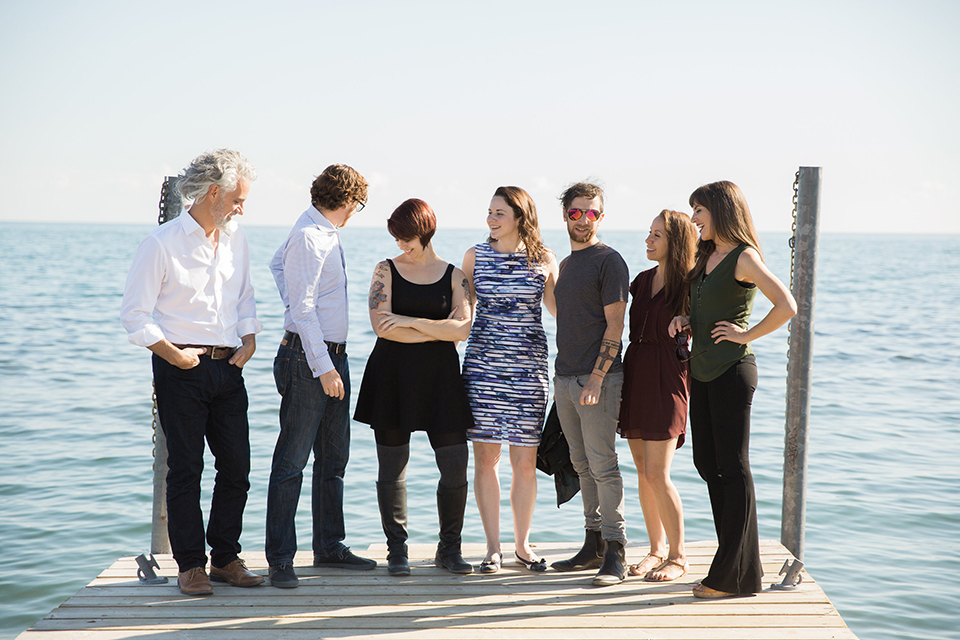The concept of a signature or “flagship” CSR program is not new. However, aligning signature programs with company brand and purpose are more recent developments as the CSR field has matured. And while you’d think it seems pretty darn logical to have a common purpose underlying your programming, it doesn’t always pan out that way. Every company has a different combination of programs and policies to support their social impact goals, and some have a longer history of CSR than others. Signature programs – and non-signature programs – may not have been launched with the level of intention and thoughtfulness that purpose can provide. And the intersections between company brand and purpose are complex beasts. Let’s talk about how to bring these concepts together.
Legacy CSR programs were often launched in response to social progress or shifting market trends. The evolution of CSR portfolios tends to reflect what is considered ethical in business or in society, or it’s based on perceptions of what’s more engaging and meaningful for employees and nonprofit partners.
I like to think of legacy CSR programs as additions to a house. You start with the foundational core – usually this is philanthropic focus areas, some investment programs that provide grants to community partners, and maybe an annual payroll deduction campaign. Then you see that Company X – in the same field as your company – is offering a Dollars for Doers program for its employees. Then Company Y starts doing it, and Company Z. You want to stay on top of the trend, so you add a new bathroom in a hurry. Next, it’s matching gifts: you learn it’s an industry best practice to match up to $1,000 USD per employee. Up goes a new verandah. Before you know it, you have an eclectic, rambling house that’s pretty impressive in terms of size, but is absolutely begging for an HGTV makeover. Get my drift?
I tell clients who want to grow a small portfolio that they’re living in a structureless world of wonder and opportunity. You don’t have to deal with the winding, mysterious hallways of legacy CSR. But no matter your situation – hulking legacy portfolio or just starting – you can always step back and ask the big, juicy question: what is our true strategic intent? Can you imagine me rubbing my hands together gleefully? That’s because this is the real work. How you answer this question is how you answer the true needs of nonprofit partners, support and engage employees, and get to an effective business and talent advantage. The definition of a signature program is:
“… a highly-promoted CSR program that best represents a company’s commitment to social responsibility. Signature programs often focus on the intersection of the company brand with its commitment to its community, environment and stakeholders[1].”
Five Critical Success Factors for Signature Programs
A company can have several signature programs – high-investment, high-visibility programs that help you demonstrate your purpose and elevate your brand. I’m making that sound really easy, but unfortunately, I must crush your dreams: it’s not. Corporate Citizenship[2] outlines five critical success factors for flagship programs that can help you discover and act on your true strategic intent:
-
Purpose: what the programme aims to achieve and why achieving this goal makes sense for the organisation.

One of the sticking points we run into (quite frequently, might I add) is that there tend to be competing agendas when it comes to purpose. The CSR purpose, enterprise purpose, and corporate citizenship purpose aren’t always the same. If I was boss of the universe, I’d tell everybody to make their enterprise purpose social good oriented. Sadly, I’m not boss of the world, so when you get back to that big, juicy question, “what is our true strategic intent?” you must go beyond your immediate purpose narrative and consider the intersections of purpose at your company. How can you bring these narratives together? Why aren’t they together in the first place? What were you thinking?
-
Space: the specific niche within the most relevant societal, environmental, or economic issue that the programme will focus on.
I call this an “ecosystem review,” and I cannot emphasize enough: Consult. With. Your. Community. Partners. Listen to people. Before deciding on your space, you must understand, and I mean really understand, the systemic implications of an issue or issues, and the impacts that your company may be having on that system. And – more emphasis here – center humanity. It may seem obvious but put the people most affected by this issue at the center of your research and understanding. What is their lived experience? What is their story? And how do you make sure you don’t prioritize your company goals over their needs?
-
Resources: the financial and non-financial contributions that are allocated to the programme over time including internal and external resources.
Consider your human capital. The budget for the program is going to be dependent on your current portfolio, historical budget allocations, and the level at which this kind of initiative is prioritized and valued at your company. But you have access to thousands of employees who are just waiting to be asked to do something big. In terms of creating a talent advantage, inviting employees to drive social impact lends itself to skill development, leadership development, recruitment, and retention. Employees are the face of the company; they give life to your brand and your purpose. This is an effective way to bring them into this work and to hit on the talent/impact intersection.
-
Impact: the measurement and impact assessment framework that will guide the management of the programme and the evaluation of its success.
A systems approach to impact means that change takes time. It is incremental. Antoine de Saint Exupery said, “If you want to build a ship, don’t drum up the men and women to gather wood, divide the work, and give orders. Instead, teach them to yearn for the vast and endless sea.” Your employees – the “human capital” mentioned above – drive your impact. Without a clear, articulate vision for long term impact, you can’t help employees yearn for the vast and endless sea.
When defining what long term impact looks like, there are three dimensions: employee (the individual), the company, and the community. If you’re building a Theory of Change model, break it down under these three categories. The outcomes and impacts for individual employees are going to be very different than the goals you want to achieve for the company or for the community – but every dimension is integral to success.
-
Story: the core messages of the programme and how to reach key audiences with them.
The stories you tell are the mechanism by which you build your brand. If you can create a vision for impact, if you can help people yearn for the vast and endless sea, you must be able to tell the story of how you’re going to get there, of how you are getting there. People are going to stop yearning for the sea if you stop talking about the sea! When you’re spending time allocating resources, budgets, investment – make room for communications and branding. A rallying cry must be reinforced, it must be done at local and global levels, and it must be cohesive.
These are some starting points for the evolution of your CSR portfolio, and whether you’re wrangling a swath of legacy CSR programs or starting fresh, these elements will help you clarify your strategic intent and embed it in every part of your program development. Only by doing this can you effectively use social impact to define your brand.
Learn more about how Realized Worth can help you grow your program portfolio – check out our products and services today!
[1] Signature Program. Carr, G. (2017). Retrieved from http://csrmatters.net/glossary/signature-program/#:~:text=A%20’Signature%20Program’%20is%20a,its%20community%2C%20environment%20and%20stakeholders.
[2] Flagship Programmes: Focusing Corporate Social Investment for Impact. Corporate Citizenship. (2015). Retrieved from https://corporate-citizenship.com/our-insights/flagship-social-investment-programmes/






